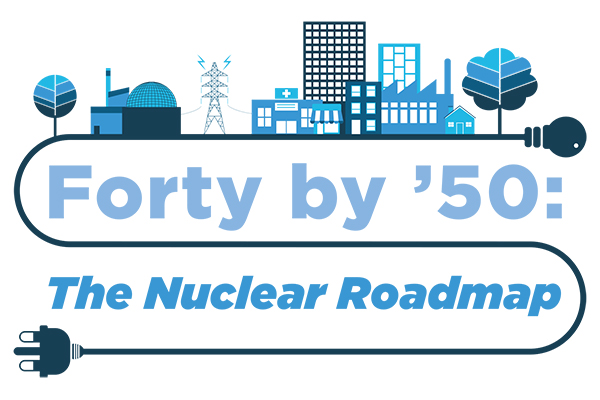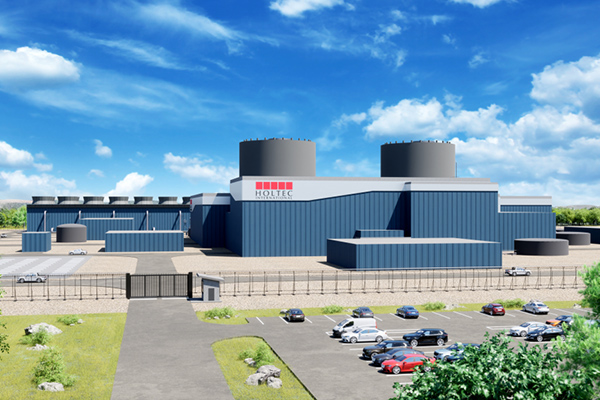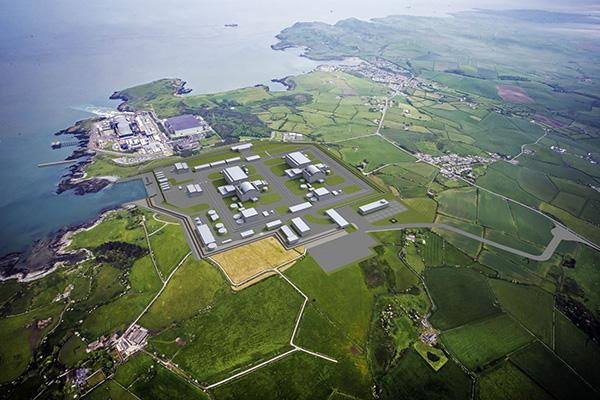The UK needs to commit to new nuclear power stations to make a clean economic recovery and meet net-zero commitments, according to a new report from the Nuclear Industry Association (NIA).
The NIA produced the report, Forty by ’50: The Nuclear Roadmap, for the industry/government Nuclear Industry Council (NIC). It is released ahead of the annual progress update from the government’s Committee on Climate Change.
The NIC-endorsed report says that, in addition to helping meet long term goals, prompt decisions on a new nuclear power programme could unlock mega-projects and deliver immediate benefits to help tackle the economic impact of Covid-19.
According to the report, an ambitious programme based on existing and new technologies could provide up to 40 per cent of clean power by 2050, and drive deeper decarbonisation. It could eventually bring as many as 300,000 jobs and £33 billion of added annual economic value.
Nuclear currently contributes 40 per cent of the UK’s clean electricity, but demand is expected to quadruple from the replacement of fossil fuels and a boom in the electric vehicles and heating sectors.
The report was welcomed by Nuclear AMRC CEO Andrew Storer, a member of the NIC.
“Nuclear needs to be part of the energy mix for net zero and, as this report shows, it’s a technology that can maximise the benefits for the UK economy,” Storer says. “British companies can lead the development of new technologies such as small and advanced modular reactors and fusion power, using their manufacturing expertise and innovation to reduce the cost of the low-carbon transition while driving economic growth and creating jobs in the North of England and across our industrial heartlands. We really need to push forward now to grasp the opportunity and deliver on our clean energy commitment.”
Last week, the International Energy Agency urged policy-makers to focus on sustainable recovery. At the same time, the Energy Systems Catapult published detailed analysis calling for at least 10GW of new nuclear capacity beyond the current new-build at Hinkley Point.
“Net zero needs nuclear, and the sector is developing fast,” says Tom Greatrex, Chief Executive of the NIA. “The next large-scale projects are now deliverable much more cheaply by building on repeat and tried and tested designs, capturing learnings from our new build programme, and making important changes to the way projects are financed.
“We’re confident the price of nuclear power will fall from the £92.50 per megawatt hour for the first plant, closer to £60/MWh for the next wave of power stations reducing to around £40/MWh for further reactors.
“Greenlighting new projects already in the pipeline would trigger a ramp-up in investment and job creation in parts of the UK facing the biggest economic challenges and clear the way for long term decarbonisation through the hydrogen economy, helping establish the UK nuclear sector as global leader in the field.
“Commitment to the roll-out of smaller and advanced reactors would build on that momentum. Conversely, if we do nothing, we are effectively sitting on a winning hand for a greener future.”

The Forty by ’50 report sets out six important steps to be taken in 2020 to turn aspiration into reality:
- The nuclear industry must continue to drive down costs of new build projects and establish delivery excellence.
- The government should articulate a clear, long-term commitment to new nuclear power.
- Progress must also be made on an appropriate funding model for nuclear new build to stimulate investment in new capacity and reduce the cost of capital.
- A national policy statement and facilitative programme including siting and licensing proposals should be developed for small reactors.
- The 2030 targets of the Nuclear Sector Deal (which marked its second anniversary in late June) should be maintained, including cost reduction targets for 30 per cent for new build and 20 per cent for decommissioning, a 40 per cent female workforce, and £2 billion of domestic and international contracts for the UK supply chain.
- Industry and government should agree a framework and commitments, focused on cross-sector collaboration outside traditional electricity production including the production of medical isotopes, hydrogen, and synthetic fuels for transport, along with heat applications including district heating and agriculture and storage technologies.




